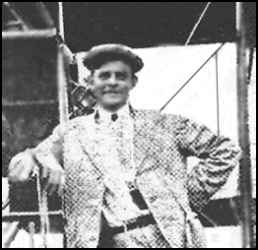
1890-1912 |
 |
|
From: Goshen Trails, Vol. 5, No. 3 - July 1969 The picture above is found on a page from the Yesterdays of Hamilton County, Illinois website of Carol Lee Yarbrough. |
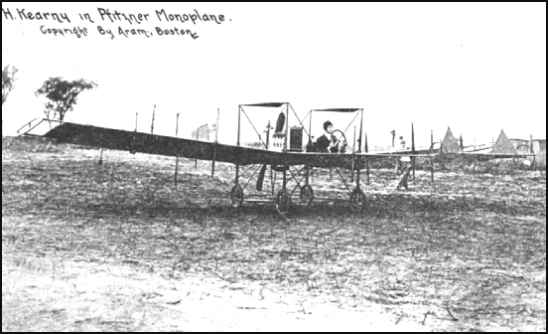 |
|
Copyright By Aram, Boston, 1915 Photo Courtesy of Roy Nagl Ancient Aviators Website |
|
The star of the meet was to be Walter Brookins. A number of other aviators were scheduled to appear at the Fairgrounds; Andrew Drew and Tom Benoist of St. Louis, John D. Cooper, Charles Zornes, Sax Ganz, C.O. Prowse, and Hillery Beachey, the brother of Toledo aeronaut who had flown dirigibles in St. Louis in 1907 and 1909. In addition, several pupils from Tom Benoist's flying school intended to exhibit their fledgling talents; Harry Rafferty, John Woodlief, Alfred Boullet, B.N. Elsk, and Charles Griffin. Contests for rapid starting, speed, altitude, target bombing, and accurate landing were planned, as well as the usual aerobatics by all participants. The Aero Club of St. Louis scheduled a broader tournament for October 14-21 at Kinloch Park, its permanent aviation field. On September 5, 1911, Albert Bond Lambert signed an agreement with A. Roy Knabenshue, manager of the Wright Company, whereby the Wrights would supply three pilots and biplanes in return for 25 perecent of the gross receipts of the meet. The three aviators -- Howard Gill, J. Clifford Turpin, and P.O. Parmelee -- were to fly every day but October 15, because of the rule of the Wright Company against Sunday flights. Also entered were Dr. Henry Walden of Mineola, Long Island, with his picturesque Antoinette monoplane; Amedee V. Rayburn Jr. of St. Louis with his Bleriot monoplane; John D. Cooper and Horace Kearney of St. Louis with Wright biplanes; George Beatty; and Walter Brookins. The History of Aviation in St. Louis |
By FRANK BOYETT Gleaner staff Special Historical Edition of The Gleaner Nov. 28, 1999, He bombed. That doesn't mean he turned in a bad barnstorming performance -- although some might call it that. It means he literally collided with the adjacent Kleymeyer & Klutey brickyard. But let's allow Adams to tell the story in his own words, which he did when he was interviewed by the Evansville Press in 1936. "I was supposed to give an exhibition," said Adams, who was in his late 20s at the time of the flight. "On the first day space was cleared off (at the fairgrounds on South Green Street) for my take off. The motor was started and I perched out in front of it. "All went well for a few seconds. But it soon became apparent that the ship wasn't gaining altitude properly. Above 10 feet it wouldn't budge." That was unfortunate, because the brickyard structure was about 15 feet high. And it was directly in his path. In the ensuing crash, Adams shattered his airplane, one of his ankles and his hopes of impressing the home folks. It was the worst wreck of his barnstorming career. That may be overstating the case a little, since he crashed only one other time. Although the plane suffered fairly severe damage he was able to patch it up and resume his barnstorming. He continued to use the same plane, a Curtiss bi-plane pusher, until he retired from stunt flying. Adams wasn't the first aviator to fly in the Tri-county area, but he was certainly the first of the homegrown variety. Probably the first man to fly in this area was a fellow by the name of Horace Kearney, who put on a flying exhibition at the Union County Fair in Uniontown in August of 1912. Kearney had learned to fly the hard way. He had broken 14 different bones learning to fly, which he began doing about 1909 -- a mere six years after the Wright brothers' historic flight at Kitty Hawk. Kearney was largely responsible for Adams taking up a career as a pioneer barnstormer. "In 1912, I happened to go to a county fair and saw Horace Kearney, a flier for the Curtiss Exhibition Co., stage an exhibition flight," Adams said. "I watched him take off, circle around the field, do a few mild stunts and land. It looked easy. "After the flight I managed to talk to Kearney and learned that he was being paid $600 for the single exhibition flight. I talked with Kearney again and asked him where I could learn to fly. He told me to go to Glenn Curtiss, who was opening a training school for would-be aviators like myself." Adams managed to scrape together a few hundred dollars and was soon on his way to Hammondsport, N.Y., where he enrolled in a class with three other students. "Today a student's first big thrill comes when he solos," Adams said. "But when I was learning to fly we soloed on our first flight. The reason is simple. The planes wouldn't carry more than one person. Since it wouldn't do much good for the student to stand on the ground and watch the instructor fly, the instructor stood on the ground and watched the student fly -- or attempt to fly." First, though, the aviation students practiced on the ground, taxiing and getting a feel for the controls. Once he had the skills to fly, Adams bought his own plane and began a full-time career as a barnstormer. "I cleared between $30,000 and $35,000 the first year," he said. Although Adams is not well-known nowadays as an aviation pioneer, he maintained that he was only the third person in the world to loop-the-loop in an airplane, and was the first to fly in a circle with the wings perpendicular to the ground -- a stunt known as a 90-degree vertical bank. "Up to the time I tried it, it wasn't believed that a plane could fly in that position," he said. Upon his retirement from stunt flying, Adams dismantled his plane and stored it in the Rash Tobacco Factory. Unfortunately, the tobacco factory burned in 1929, the Press reported, and "Henderson lost the first and only airplane owned by one of its citizens up to that time and the world lost a valuable relic of the early days of aviation." Editor's Note: The fascinating article above was kindly submitted to me by Mr. Boyett in response to my request to him to use the following article on Baxter's page. I am very grateful to him, on behalf of my visitors, for enabling me to greatly expand on the career of one of the lesser known pioneers. |
|
Daily Journal and Tribune, Knoxville, Tennessee: December 15, 1912, Transcribed by Bob Davis - 12-31-03 Kearney was last seen as he passed Point Fermin, the northern headland of Los Angeles harbor, at 1:15 o'clock. At the speed he was flying, he should have reached Ventura, where he was scheduled to stop for gasoline at about three o'clock. Radiographs flashed to vessels along the coast have failed ot bring any trace of the aviator and tonight the belief reveiled that Kearney and Lawrence have met with disaster. Bob Davis To read the rest of this story, as offered in six more newpaper articles, click on: |
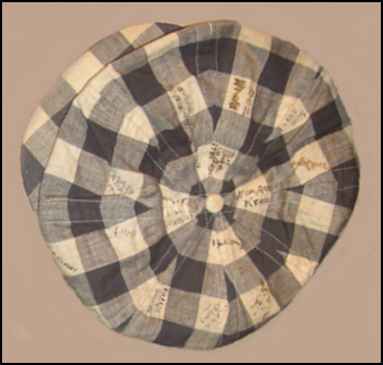 |
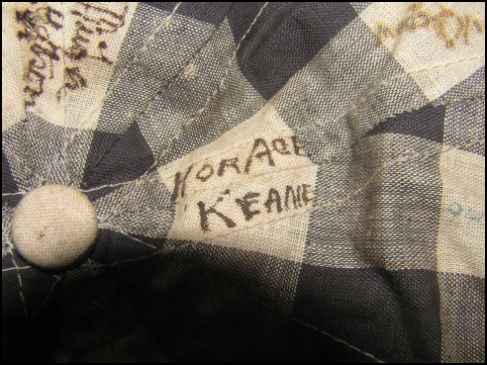 |
|
The autographs total 19 and I have been able to identify 6 so far, Clara Adams, Slim Arens, Jerome Kingsbury, Dean Ivan Lamb, Elmo Neale Pickerill and Horace Kearney. from Mrs. Billie Hanks Miller and her husband Capt. Edward L. Miller Courtesy of Scott T., 8-24-10 |
|
|
|
|
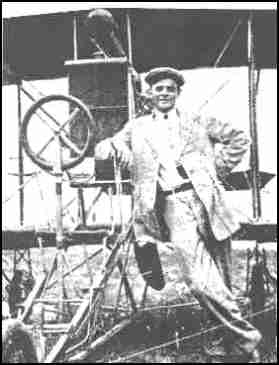 |
|
a poem by Neil Tracy From: Goshen Trails, Vol. 5, No. 3 - July 1969 The picture above is found on a page from the Yesterdays of Hamilton County, Illinois website of Carol Lee Yarbrough. I invite you to enjoy this unique poem by clicking on: Kearney and the Mail |
|
From the newspaper clippings above. |
|
Recommended Further Reading:
CITY OF FLIGHT The History of Aviation in St. Louis by James J. Horgan The Patrice Press, 1884 |


|